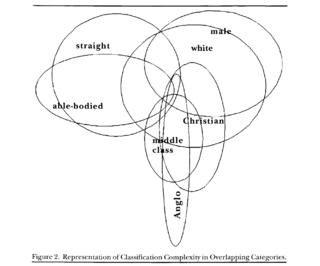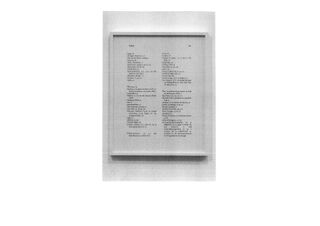Reflections on classification in Hope A. Olson, Mapping beyond Dewey's Boundaries[edit]
File:Olson mapping beyond deweys boundaries.a4.pdf
Hope A Olson's text "Mapping Beyond Dewey's Boundaries" on spatial representations in classification systems, explored through a project that attempted to cross-reference two classification systems - A Woman's Thesaurus and Dewey Decimal Classification by Mary Ellen S Capek. Stating that "classifications are locational systems" suggests that spatial representations can be used with various effect; describing, exposing, and when used as metaphors, shifting the discourse.
1. Spatial representation of classification systems reveals the ideological conditions that form them.
Olson refers to spatial representations of classification systems in the form of diagrams.
The first diagram is one that shows distribution of subjects, with the idea of a mainstream core that diffuses towards the margins. The second is a Venn diagram that illustrates how "mainstream" or "core" descriptors actually eventuate in very small "cores" due to limitations by Boolean "ands'. Venn diagrams operate on the basis of duality - something is or isn't part of a set.


2. The concepts of "paradoxical space" and "rhetorical space".
Paradoxical space is described in a similar way to the paranodal; being "both inside and outside, center and margins".
final thoughts[edit]
How to utilise a "paradoxical space"? The text seems to suggest focusing on connections, relationships between subjects rather than differences? What could an associative classification system look like?
The space of a page is crucial in the printed format - the text block excludes the margin - clearly delineating what is recognized as authored, and what is not. Book printing has many terms to cut up a page into a layout - deciding on "safe areas" to print and areas to leave open. In my own experience, shaping the text block is the first consideration when laying out a page.
However, some formats of digital books (e.g. EPUB) do not have the notion of a page. There is the space of the screen, but this is mutable, whereas a printed page is not.
